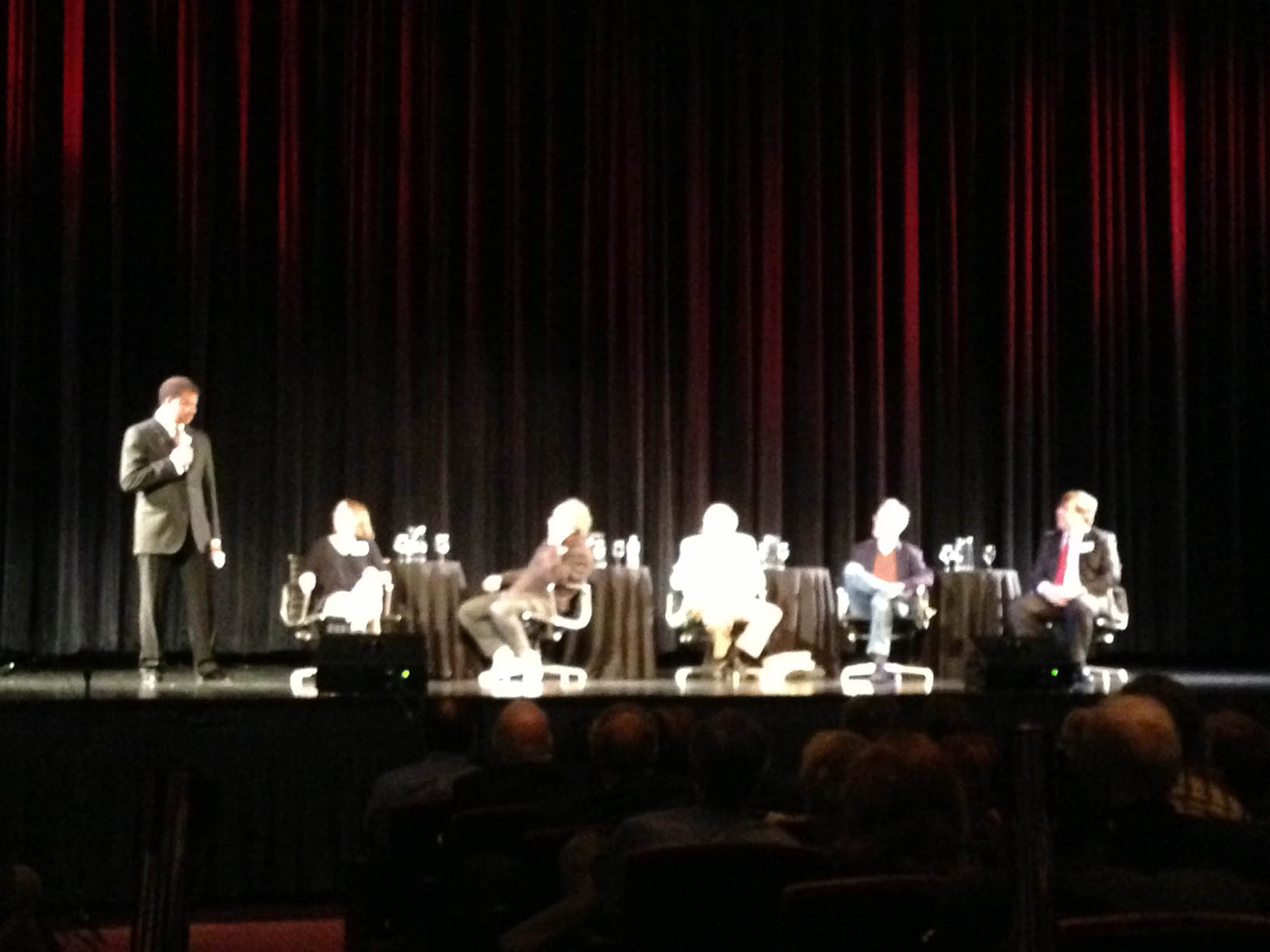What Is Nothing? Physicists Debate

NEW YORK — It was all much ado about nothing as physicists and thinkers came together to debate the concept of nothing Wednesday (March 20) here at the American Museum of Natural History.
The simple idea of nothing, a concept that even toddlers can understand, proved surprisingly difficult for the scientists to pin down, with some of them questioning whether such a thing as nothing exists at all.
The first, most basic idea of nothing — empty space with nothing in it — was quickly agreed not to benothing. In our universe, even a dark, empty void of space, absent of all particles, is still something.
"It has a topology, it has a shape, it's a physical object," philosopher Jim Holt said during the museum's annual Isaac Asimov Memorial Debate, which this year was focused on the topic of "The Existence of Nothing."
As moderator Neil deGrasse Tyson, director of the museum's Hayden Planetarium, said, "If laws of physics still apply, the laws of physics are not nothing." [Endless Void or Big Crunch: How Will the Universe End?]
Deeper nothing
But there is a deeper kind of nothing, argued theoretical physicist Lawrence Krauss of Arizona State University, which consists of no space at all, and no time, no particles, no fields, no laws of nature. "That to me is as close to nothing as you can get," Krauss said.
Sign up for the Live Science daily newsletter now
Get the world’s most fascinating discoveries delivered straight to your inbox.
Holt disagreed.
"Is that really nothing?" he asked."There's no space and there's no time. But what about physical laws, what about mathematical entities? What about consciousness? All the things that are non-spatial and non-temporal."
Other speakers offered different ideas for nothing, such as a mathematical concept of nothing put forward by science journalist Charles Seife, author of "Zero: The Biography of a Dangerous Idea" (Penguin Books, 2000). He proposed starting with a set of numbers that included only the number zero, and then removing zero, leaving what's called a null set. "It's almost a Platonic nothing," Seife said.
The theoretical physicist Eva Silverstein of Stanford University suggested a highly technical nothing based on quantum field theory that involved a quantum system lacking degrees of freedom (dimensions). "The ground state of a gapped quantum system is my best answer," she said.
Holt suggested another idea of nothing.
"The only even remotely persuasivedentition of nothing I've heard form a physicist came from Alex Vilenkin," a physicist at Tufts University, Holt said."Imagine the surface of a ball. It's a finite space but with no boundary. Then imagine it shrinking down to a point." That would create a closed space-timewith zero radius.
Absence of something

Still, Holt said he wasn't won over by that definition either, and wasn't convinced that nothing actually exists.
"Analytic philosophers say nothing is a noun, it seems like a name for an entity, but it's not — it just means not anything," he said."What's so special about nothing? It's not a fruitful philosophical notion."
But just because nothing may be prohibitively difficult to conceptualize, doesn't mean it's not a real thing, Krauss countered.
"There are lots of things in science that are impossible to get any intuitive handle on, but that doesn't mean they don't exist," Krauss said.
This difficulty in understanding nothing dates back a long time. The ancient Greeks had no concept of zero and hated the idea so much they refused to incorporate zero into their number system, even when their astronomical calculations called for it.
"We humans have a real revulsion for nothing, for a void," Seife said. "For us nothingness represents something that we're afraid of, disorder, a breaking of the rules."
Ultimately, the definition of nothing may just be an ever-moving target, shifting with every scientific revolution as new insights show us what we thought was nothing is really something.
"Maybe nothing will never be resolved," Tyson said.
Follow Clara Moskowitz on Twitterand Google+. Follow us @livescience, Facebook & Google+. Original article on LiveScience.com.










